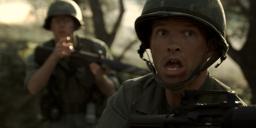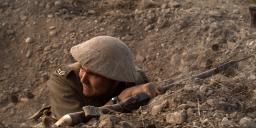
Panasonic GH1 - Film Mode Settings
-
Yes, stonebat, actually you're the one who understood what I mean about cinestyle flat image!!! The budget camcorders like Sony XDCAM, Canon XH, Panasonic HVX, etc. they all produce fine flat image.
So, MrAnthony, I don't contradict my earlier posts because the look is really what can be done in post, but if the source equipment can't give the base image with the right flat settings, then in post everything is doomed to failure...
I use exactly Smooth mode with everything at "-2" before anyone has written that. And yes, this is flattest look G/GF/GH can produce, but it's far from what must be! Therefore, a "Technicolor CineStyle"-like patch for Panasonic DSLRs would be the most used by the users, no matter what some of them say now still not realising what possibilities it will open to all of us. -
I think Producer meant "flatter" video straight out of the camera to make it easy to create the cinematic look he wants during post-processing.
GH13 forum consensus seems Smooth film mode w/ all -2 settings gives the most flat look out of GH1x. If someone wants more parameters to do more fine tweaking, well... good luck~! -
@ Producer: Your latest post contradicts your earlier posts, as you now admit that the look you want can only be done by post-processing the image, not in-camera.
Digital-based video cameras produce video-like images. Period. It's up to you to process it further. Heck, even film is processed with internegatives and interpositives, before the final look.
Just giving us 24P as an option has done more to produce a "film-like" look than any other adjustment.
One of the most striking examples of this was watching Blu-Ray Transformers II on a 120 Hz digital television: the image looked like it was shot on a handheld video camera because....it was. It was the post-processing that gave it the film look, plus it was processed to be seen on televisions with much lower refresh rates.
Instead of begging for a hack, learn lighting and composition. Learn your camera controls. Learn your post-processing controls. The "big-budget" picture look has more to do with the amount of talent behind the camera than the equipment itself. "Millions want it"...LOL, yeah, because they ignorantly think that it's the gear that does the work, not the brain. -
Required viewing if you want to be a filmmaker.
That's not to say I would do everything he does. The jello cam effect means I would rarely shoot handheld as much as he did, but tripods are light these days. The important thing for me is how he shoots and edits in cam.
One thing I'll disagree with you @Vitaliy , is "almost no cuts". Rodriquez cut literally on EVERY LINE of dialogue. He did it because of technical problems, he recorded audio separate and it didn't sync up, but when you see the film, the cutting creates an energy and movement, even in the dialogue scenes.
EVERY movie Rodriquez has made, while all not the best, most are must owns for the commentary tracks where he tells you how he did things and for the other 10 min film schools. His biggest weakness though, is he's not that good a writer, so his own scripts suffer from the quick pace he creates. -
@producer
>Vitaliy, you will see that millions of people want to produce a look like in the big budget movies.
My best advise is to start learning composition, lighting and writing scripts in this case, not dreaming about flat picture :-) This is for millions. But flat picture profile with changed gamma could be useful sometimes if people understand that they are doing.
@Mark_the_Harp
>One of the things I love about card-based cameras: it's so easy to check the shot afterwards.
You really hit a nerve here, as next gen cameras must advice you about problems, show realtime new generation sharpness overlay (being closer to you on their 3D screen), they must have ability to find problems with alignment, etc. Flat profiles? Could be in top cameras, may be. This is not consumer thing in HDSLR. -
@Vitaly. I hear you! I just did a shoot where the client liked a move down to an object on a windowsill. Unfortunately it was just a shot I'd gathered as part of a recce before the shoot, so the movement was a bit rough. I spent so long trying to make it work that it would have been easier to drive over there and just shoot it again! The shot was never good enough to use and we abandoned it.
One of the things I love about card-based cameras: it's so easy to check the shot afterwards. The time taken to do this is well worth it if it gets you to re-shoot and do it better. Just wish I'd done that in that particular case! -
If you search in internet, forums, etc., Vitaliy, you will see that millions of people want to produce a look like in the big budget movies.
Meanwhile, when I say "RAW IMAGE" I don't mean raw format, but raw as no any modes/colors/contrasts/sharps/etc. applied. And I always mean video shooting, not snapshot. -
>When I discovered RAW I was amazed at what you could do with images.
First thing to remember - always do everything good on set, do not count on postproduction.
I do not know why individuals with such hobby want to mimic big budget films with many professionals in pipeline. In fact, they must mimic workflow of cheap serials (few takes, cheap lighting, no or very small post processing, almost no cuts, etc). :-) -
@Vitaliy - good point about HDR. When I discovered RAW I was amazed at what you could do with images.
-
Of course, such a picture from this sensor is really hard to say it will be possible. I even don't mean something like that. But, as I wrote in PTool topic, for example the color mode "RETRO" is the closest possible to what the "cinestyle" flat image, but the lack of any correction parameters is what makes impossible to tune this mode.
P.S.: About HDR I'm totally agree with Vitaliy... -
> If you had very good actors, you could get them to repeat the action exactly for a second shot at a different exposure and get HDR video that way:-)
Any why do you need HDR video.
Looking at stills field I don't see anyone who improved his shots just by going HDR :-)
In fact, most HDR stills look awful. -
Really? I was being tongue-in-cheek and thinking it was impossible at any time.
There is one other solution, of course. If you had very good actors, you could get them to repeat the action exactly for a second shot at a different exposure and get HDR video that way:-) -
>Well, what would be great is to be able to record raw video out of the sensor. Doubt that's possible unfortunately. Vitaliy?
You are few years ahead :-) May be even in 2013 we'll see something like that.
-
@producer
I think that it is not best idea to illustrate your post about color with 7Mb JPEGs :-) Try to make smaller version.
As I said, I moved this up in my priority list, but it requires many things to be done first.
As for cinema look, I don't give a shit about it myself (so this is my personal view), so if some will make good interesting story with tiny sensor SD100 in 60i this is cinema look, and if some guy is shooting flowers on extra expensive dolly on Mark II with Zeiss glass and make heavy grading, I don't care if it is "film looking" or "cinema looking", because all this is useless crap. Good looking useless crap. -
Well, what would be great is to be able to record raw video out of the sensor. Doubt that's possible unfortunately. Vitaliy?
Having worked with raw GH2 stills, you can certainly get amazing images out of them, and recover detail you couldnt get out of the jpg produced in-camera. I agree to be able to do that with GH2 video would be terrific! -
To MrAnthony and all other people thinking like him: this is not film-like, this is exactly what the most expensive cams present as a picture. Every movie production starts from this look which is the most suitable for any further final process. Don't tell me you can't recognize the picture of any Hollywood production and any soup novella.
Of course, our Panasonic cameras will never achieve such a look, but what can be done is just to go closer to it. And please, don't mention the theory about story, lighting, etc. - those things are extremely important and they are part of every production without any doubts, but the picture is what defines the magic of the cinema look.
If you deny the raw frame taken with RED ONE, then what to discuss more?!?
Ok, another two RED ONE frames, this time processed from raw, it speaks by itself:
 RED ONE_1.jpg2048 x 1024 - 478K
RED ONE_1.jpg2048 x 1024 - 478K
 RED ONE_2.jpg4096 x 1743 - 7M
RED ONE_2.jpg4096 x 1743 - 7M -
It was explained to me a long time ago from an old time filmmaker that the "film look" cannot be achieved with most any present day video solution, he explained that the 'secret' if you want to call it that is in the dynamic range of film. Video cameras have only a fraction of the dynamic range of film and until they do what you mostly see is tv shows shot in very similar light levels because the cameras cannot handle scenes with very very dark levels and very bright levels and mid levels all at the same time without breaking up in digital editing post, something which film can handle much better compared to today's video cameras. Once video cameras are able to do live HDR video, then video cameras will be able to start competing with the dynamic range of film, but there are not really any live hdr cameras yet for video that are affordable.
But think of this ok, what people remember about a movie is the story and the characters behind the story, not the dynamic range, the panning, lighting, depth of field, etc., so you can have all the money in the world for the best 35mm cameras, dops, stock, lighting, editors, etc. but if you don't have a great story that people like and are interested in then all one's technical items and knowledge is just about useless. Spending time writing a good story and plotting it out on a storyboard is more important than what camera specs you use in the end anyday. We spend all this time on getting a perfect technical image, but once we get it we can't do anything with it because we have no story to tell so we end up shooting folliage and dogs in backyards and looking for how much noise there is in the shadow areas of our shots. I do it too.
-
How's that Canon moire working out for ya??
the hack is not ever going to change anything in the processing of the image. basically, what you are wanting the hack to do is to alter the "raw" image from the sensor and impart colors that you feel are film looking.
I, on the other hand, want as flat an image as I can get with the widest dynamic range. i will handle the color in post.
so, no, it isn't ever going to happen for a lot of reason. different processors, etc...it's not possible. the "processing engine" in the panasonic cannot be altered like the canon...or even the nikon, which both have alterable color profiles built-in that act on the raw to jpeg conversion. panasonics jpeg "engine" is pretty basic and efficient, but not really alterable from the firmware, IMHO.
If you want magic lantern colors-get a canon. If you want flat images, set everything in your panasonic to -2, and maybe shoot in mjpeg 4-2-2, and color the hell out of it. even the avchd codec, with high bit rates, can be color raped before it starts to fall apart.
The Red has 12 bit 4-4-4 color depth(compared to 8-bit, 4-2-0 for the gh1, 4-2-2 in mjpeg 720/30 with hack).....for that, you really need a dedicated Colorista set-up, and pay a colorist big bucks, to achieve the effects you want. -
Producer, I really don't understand what you're saying. Your first paragraph is just agreeing with what we've been saying! As far as I can tell...
-
Actually, guys, just be more interested to know: the famous RED, ARRI, etc. shoot exactly like that, then everything goes to post editing. Just take a look at the raw picture below, it's taken with RED ONE. So, do you really think that such a high technology gives annoying result?!?
Unfortunately, the Canon DSLR hackers are much more improved in the world of cinema shooting realising where to point their efforts. I said "unfortunately" because still no such a Panasonic hacker who thinks that right way...

 RED ONE_flat.jpg2048 x 1024 - 1M
RED ONE_flat.jpg2048 x 1024 - 1M -
Hi - to my mind those different looks in the shots of London look "cheesy". If you were going to do a whole feature film like that, it would just look annoying, but then the GH2 or any other DSLR is unlikely to be the weapon of choice for shooting a genuine theatrical release, surely. The other issue with in-camera looks is that if a client decides on a different look for a particular shot, you're stuffed. Surely it's much better to do it in post, unless there's something you're saying which I don't understand?
Start New Topic


Howdy, Stranger!
It looks like you're new here. If you want to get involved, click one of these buttons!
Categories
- Topics List23,992
- Blog5,725
- General and News1,354
- Hacks and Patches1,153
- ↳ Top Settings33
- ↳ Beginners256
- ↳ Archives402
- ↳ Hacks News and Development56
- Cameras2,367
- ↳ Panasonic995
- ↳ Canon118
- ↳ Sony156
- ↳ Nikon96
- ↳ Pentax and Samsung70
- ↳ Olympus and Fujifilm101
- ↳ Compacts and Camcorders300
- ↳ Smartphones for video97
- ↳ Pro Video Cameras191
- ↳ BlackMagic and other raw cameras116
- Skill1,960
- ↳ Business and distribution66
- ↳ Preparation, scripts and legal38
- ↳ Art149
- ↳ Import, Convert, Exporting291
- ↳ Editors191
- ↳ Effects and stunts115
- ↳ Color grading197
- ↳ Sound and Music280
- ↳ Lighting96
- ↳ Software and storage tips266
- Gear5,420
- ↳ Filters, Adapters, Matte boxes344
- ↳ Lenses1,582
- ↳ Follow focus and gears93
- ↳ Sound499
- ↳ Lighting gear314
- ↳ Camera movement230
- ↳ Gimbals and copters302
- ↳ Rigs and related stuff273
- ↳ Power solutions83
- ↳ Monitors and viewfinders340
- ↳ Tripods and fluid heads139
- ↳ Storage286
- ↳ Computers and studio gear560
- ↳ VR and 3D248
- Showcase1,859
- Marketplace2,834
- Offtopic1,320










